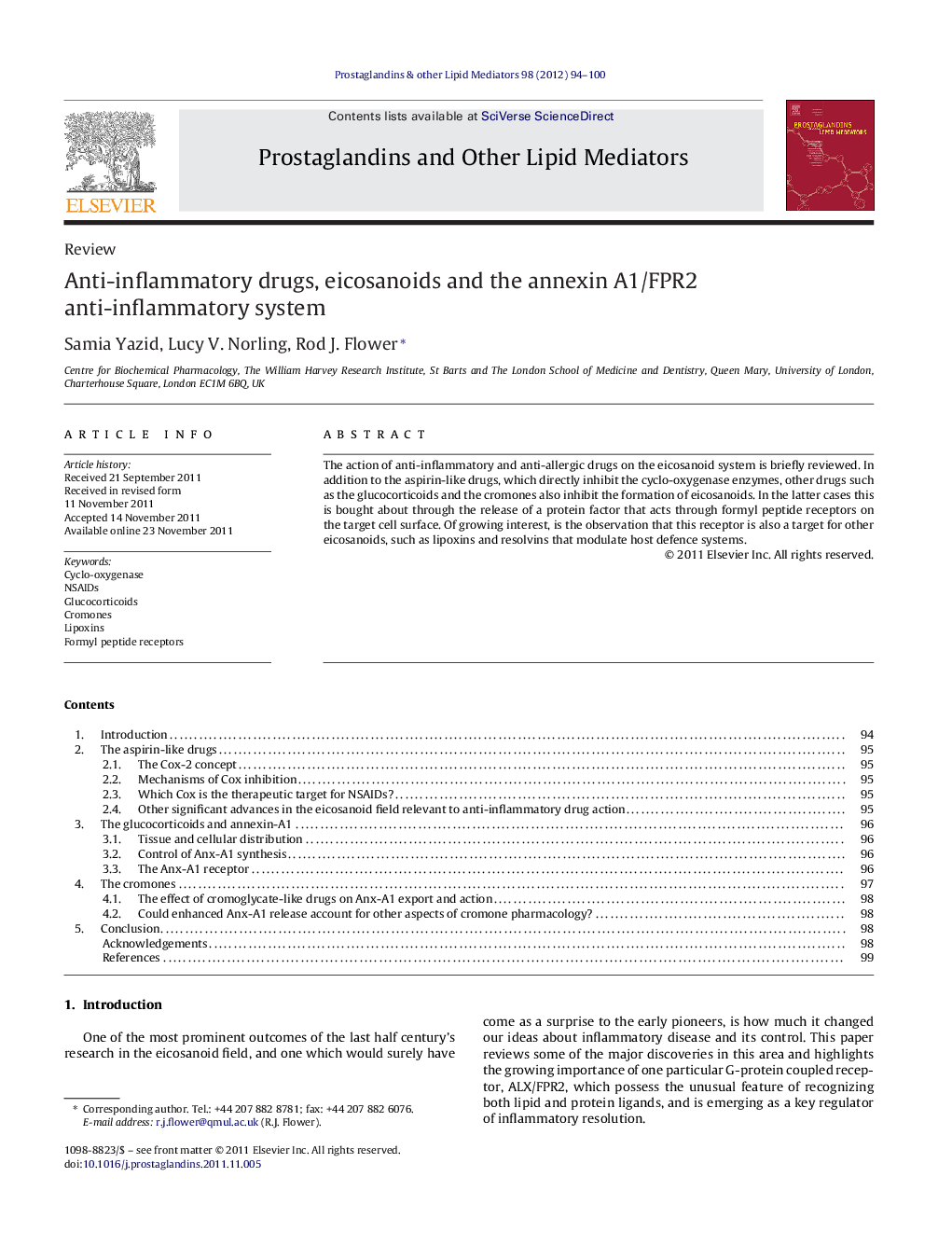| Article ID | Journal | Published Year | Pages | File Type |
|---|---|---|---|---|
| 2019858 | Prostaglandins & Other Lipid Mediators | 2012 | 7 Pages |
The action of anti-inflammatory and anti-allergic drugs on the eicosanoid system is briefly reviewed. In addition to the aspirin-like drugs, which directly inhibit the cyclo-oxygenase enzymes, other drugs such as the glucocorticoids and the cromones also inhibit the formation of eicosanoids. In the latter cases this is bought about through the release of a protein factor that acts through formyl peptide receptors on the target cell surface. Of growing interest, is the observation that this receptor is also a target for other eicosanoids, such as lipoxins and resolvins that modulate host defence systems.
► The inhibition of eicosanoid formationby anti-inflammatory drugs is reviewed. ► The aspirin-like drugs directly inhibit the cyclo-oygenase. ► The glucocorticoids and the cromones can also inhibit the formation of eicosanoids. ► These drugs release an inhibitory protein factor that acts onFPR/ALX receptors. ► This receptor is also a target for lipoxins and resolvins.
